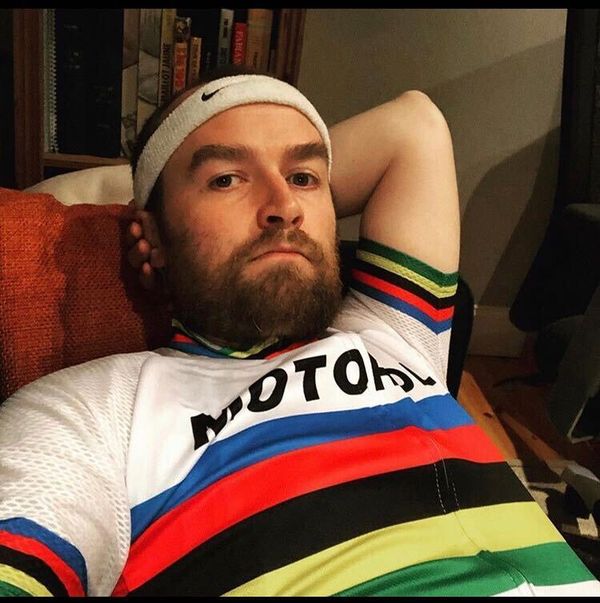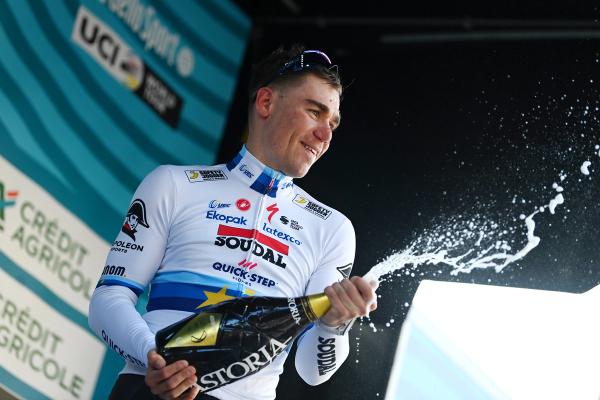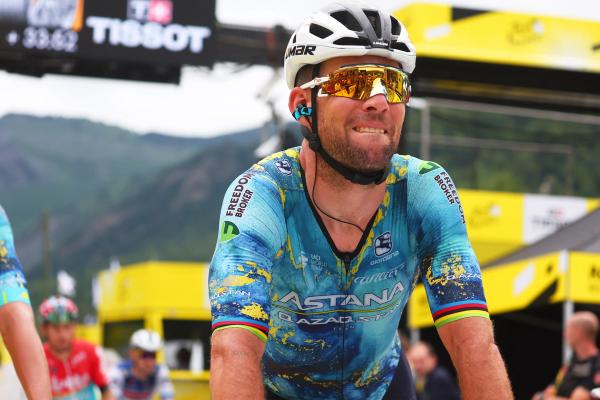GCN Stat Attack: Cillian Kelly reveals how Soudal Quick-Step have perfected the transfer window
The widespread assumption is true: sprinters are never as good once they leave Soudal Quick-Step - and we’ve got the stats to prove it
Cillian Kelly
GCN's stat expert
This week's World of Cycling episode is out now on GCN+
There are some commonly accepted truths in cycling that are in fact anything but.
Bernard Hinault only rode Paris-Roubaix once, won it, and then looked back in disgust, refusing to touch the cobbles of northern France again. Right? Wrong. The Frenchman actually rode Paris-Roubaix six times throughout his career, including the year after he won it, but he did look back disparagingly at the race known as l’Enfer du Nord - the Hell of the North.
As for another outspoken member of the peloton, the controversial Lance Armstrong, the perceived wisdom is that the American never lost time due to a crash during his seven Tour de France wins. Well, not only were Armstrong’s victories stricken from the record books, but the time loss myth is nonsense. He lost 27 seconds when held up behind a crash on stage 7 of the 2002 Tour de France.
Perhaps the most commonly accepted truth within the current peloton is that all sprinters who leave Soudal Quick-Step are never quite as good again. So, with the Armstrong and Hinault myths thoroughly debunked, it’s time we turn our attention to the fortunes of those who have left Patrick Lefevere’s team. It leaves me with one conclusion: Soudal Quick-Step have perfected the art of the transfer window.
Do sprinters get worse when they leave Quick-Step?
Although the Belgian team have refocused from the Classics to chasing general classification ambitions with Remco Evenepoel in recent times, one constant has remained: Soudal Quick-Step is the home for the world’s best sprinters.
Mark Cavendish has enjoyed two fruitful spells on Patrick Lefevere’s team, but his fellow Quick-Step alumni include Marcel Kittel, Fernando Gaviria, Sam Bennett and Elia Viviani. The alumni list will also soon include Fabio Jakobsen, who is leaving Sodual Quick-Step at the end of 2023 to join dsm-firmenich. His move begs the obvious question: do these sprinters get worse once they have left ‘the Wolfpack?’
Read more: Fabio Jakobsen to sign for dsm-firmenich until 2026
Well, unfortunately for Jakobsen, it is indeed true that in all six cases - counting both of Cavendish’s departures - the year after each of these sprinters left Quick-Step, they won fewer races than the previous year.
In the cases of Kittel and Viviani, the disparity was emphatic. Kittel won 14 races during his final year with the team in 2017, but achieved just two the following year with Katusha-Alpecin. As for the Italian, things get even worse. After taking 11 victories with Quick-Step in 2019, Viviani failed to pick up a single win the following season with Cofidis.
A similar pattern could be found with Gaviria, Cavendish and Bennett, but even if we expanded our search to so-called B-list sprinters such as Matteo Trentin, the story repeats itself. Seven wins with Quick-Step in 2017 became just two in 2018 with Mitchelton-Scott (now Jayco AlUla).
If we include all of the aforementioned sprinters - Cavendish, Gaviria, Kittel, Viviani, Bennett and Trentin - this collective managed an average of 10.3 wins in their final seasons with Quick-Step, a far cry from an average of just 3.8 wins achieved the following year.
The omens do not look good for Jakobsen.
Why do sprinters get worse when they leave Quick-Step?
Now then, there has to be a reason for the decline in performance once the world’s best sprinters leave Quick-Step. This topic does highlight another of the accepted truths within cycling, that the Belgian team’s Michael Mørkøv is the best lead-out rider in the peloton.
Common belief tells us that the reason for the performance drop-off amongst these sprinters is the uncoupling from Mørkøv, with the Dane having been able to position them perfectly for their victories as a member of the Wolfpack.

© Velo Collection (TDW) / Getty Images
Mark Cavendish's celebrates with lead-out guru, Michael Mørkøv, at the 2021 Tour de France
However, even his formidable presence at Quick-Step cannot explain the nosedive of wins after riders have left the team. For the cases of Cavendish’s first spell, Kittel’s period with the team, and Trentin’s seven seasons with Patrick Lefevere, Mørkøv wasn’t even there. The Dane only joined Quick-Step’s lead-out contingent in 2018.
With that myth debunked, our attention should instead focus on the point at which Quick-Step have felt it is time to part ways. Admittedly, all of these riders were different ages when they left Quick-Step - Bennett and Viviani were in their 30s, whilst Gaviria was a relative spring chicken at 24 - but the average age of all six sprinters when they left the team was just over 28.
If we take a more general look across the whole peloton, 28 is precisely the age when riders’ victories begin to take a tumble across the board. This indicates to me that Lefevere is ruthless, canny and really quite good at identifying when a rider has reached their peak. It is at this very point that he offloads them, just before they begin to decline.
Over the years, Soudal Quick-Step have developed a handy knack for squeezing the best years of their careers out of many of the world’s best sprinters, before ultimately wishing them well in pastures new and watching from afar as their achievements begin to dwindle.
Will Fabio Jakobsen be the next rider to suffer in new colours?

© Velo Collection (TDW) / Getty Images
Fabio Jakobsen's final season with Soudal Quick-Step has not been a stellar one
The omens aren’t great for Jakobsen, but there is reason to hope for the Dutch fast man. Owing to crashes and misfortune this season, Jakobsen has only been able to win seven races this year, a fair way down on his tally of 13 from 2022.
Not only that, but Jakobsen only turned 27 in August, so he has at least until August 2024 before his victories totally dry up…
How do you think Jakobsen will fare after leaving Soudal Quick-Step at the end of the season? Let us know in the comments!
This week's World of Cycling episode is out now on GCN+, click here to watch!



















